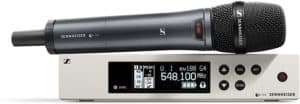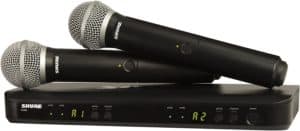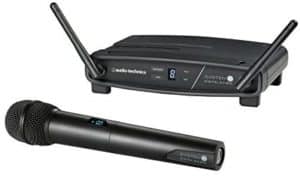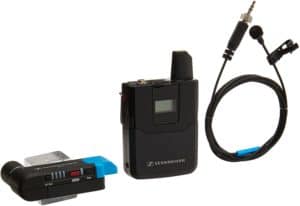Best Wireless Microphones in 2023
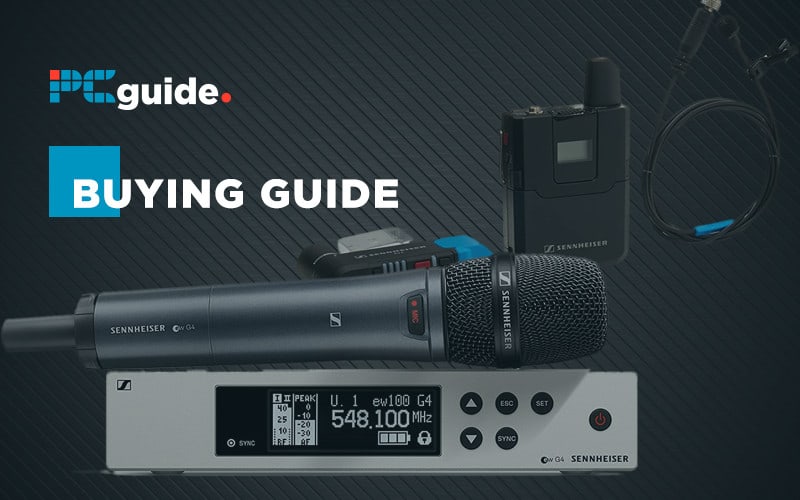
Table of Contents
If you have found your way to this page, it won’t be by accident. A wireless microphone is quite a specific need, and chances are you are looking for one for performance reasons. That may be for singing or even for you on a YouTube channel, possibly live, so you need a reliable microphone that not only sounds great but won’t let you down.
The good news is that there are some remarkably good microphones out there. They may not be as cheap as their USB counterparts, but we are talking about up to 100m worth of freedom here – not the length of a USB cable.
So if it is a wireless microphone you need to take whatever it is you are doing to the next level, have a peek at our four choices, and know that any one of them will do whatever job you need it for, admirably.
Products at a Glance
How we picked
We looked for great wireless microphones across a range of needs and budgets, also looking at options that are lapel mounted rather than handheld.
Product Reviews
- Pro level equipment
- Mute button
- Expensive
The serious-sounding Sennheiser EW 100-935S has one of those model numbers that means it is pro equipment. Sennheiser is the daddy when it comes to great sounding audio, be it from a gaming headset to a performance handheld microphone.
Make no mistake this is not an entry-level piece of imported rubbish; this is quality audio equipment, and that is why we love it so much.
With great tones, it might not be able to make your sister’s singing any better, but it will make any voice sound richer. And with a 100m range to its rack-mounted base, it will have you covered for just about any purpose, especially with it offering 1,680 UHF tunable frequencies so you can avoid just about any interference unless you were using it at an airport.
A push of a button on the mic body will automatically tune it to whatever frequency the receiver is set to, making it easy for quick frequency changes if necessary. Sennheiser has thought of just about everything.
Hook it up to a DAW like Ableton Live or Logic Pro X, and you will be able to get great-sounding vocals directly into the PC.
- Quickscan is great
- Good build quality
- Two mics equals excellent value
- It’s harsh, but if you only need one mic this might not be for you
Straight away, you might have noticed that this offering from Shure comes with two hand-held mics – perfect for your crooning duet ballads.
The fact they both send to the same receiver saves space and also time during set-up. Shure also has a system they call 1-touch Quickscan, which will scope out the best frequency for the setting and also tune everything. Nice touch and reduces the chance of human error by a significant amount.
Batteries last around 14 hours, but this will be dependent on how hard they have to work to ‘talk’ to the base. The range is fractionally lower than the Sennheisers coming in around 91m, but if 100m+ is a big deal to you, then you need to be spending more anyway.
Another feature unique to them is that they can also be used wired having an XLR connector too.
They are great mics, and this is a great set up for a more limited budget where quality is still required.
- Affordable
- Easy to use
- Good starter option
- Poor battery life
- Low range
The options we have looked at so far have been expensive, so it’s definitely time to bring the price point down to the more affordable, and this System 10 from Audio Technica is the only place to start.
It goes without saying that some factor shave to be cut when the price drops. Here the obvious areas to suffer are the range (30m) and the battery life – maybe five hours at a pinch. These are factors that move this from the pro-level into that of a plucky amateur.
That said, if you need a mic set up for public speaking or limited singing shows, then this will have you covered.
It’s easy to set up, friendly enough to use, and hugely affordable. Will it do the job you need it too? Yes, it will. There is no need to go to the extra expense if you don’t have to.
- Small form factor
- Easy setup
- Range if needed
- Expensive
It might be the case that you aren’t looking for a bulky handheld microphone but need something a bit more discreet for your videos. Once again, Sennheiser comes to the rescue – as long as your budget is big enough.
Let’s get this out of the way – this is an excellent Lav set. With a range of 91m, and a receiver that plugs directly into your camera, you can be set up within seconds and recording great audio directly to your footage, saving time in post marrying audio and video from separate sources together.
In truth, Lav mics don’t really need the range this can give you, but if you are looking for a shot where the talent says, walking towards the camera from some distance away, this gives you the flexibility to get that.
Small enough to easily be thrown in a camera bag, this could well be the piece of kit you always carry. It’s great. Expensive but great.
Things to consider
What kind of microphone do I need?
When it comes to microphones, there are generally three types of models – regardless of what they are wireless or not. The first you will be familiar with but might not have heard the name before, and that is the Lavalier microphone.
You will be familiar with them because they are what the majority of television presenters have pinned to their clothing – especially in studio setups. They are great for unobtrusive interviewing and generally will have a cable running inside the talent’s clothing to a transmitter box attached somewhere to their rear out of sight.
You can get wired Lavalier microphones too, these generally have a very long cable and end in a 3.5mm jack plug which you can plug into your PC, or you can also get them with Lighting connectors for your iPhones.
Next up are hand-held mics. These are what you will see used most on stages or at events. Singers will generally use a handheld microphone, although it can also be mounted in a mic stand. Rather than a separate transmitter unit like the Lavalier, which is designed to be small and discreet, the transmitter for a handheld is usually within the body of the microphone and the receiver box is somewhere withing range. Some of the cost of handhelds is down to their range. If a sound engineer is some way from the performer, the range needs to be strong enough to not only get to the control box but also cut through any other interference that might be in the way – ie, 1000s of people with cell phones, steel staging scaffold and the like.
Finally, we have your trusty old headset mics. These are the ones home PC users will be the most familiar with as chances are you have come across wireless headset somewhere along the way. They are also popular with pop acts who may have to dance and sing their way around a performance. When in this format they tend to be a bit less bulky than your standards gaming offering from Corsair or SteelSeries.
Our Verdict
All of these microphones are going to do a job for you. What you need that job to be only you now. If you are looking for true pro-quality, great range, and durability, the Sennheiser handhelds are second to none, but you need the budget to match. The Shure offers flexibility in that they have two handsets, which can really open up performing possibilities. If the budget is a little tighter, the Audio Technicas will certainly perform admirably considering the drop in the price bracket.
And what if you need to mount a mic on your talent’s clothing and record directly into the camera – well the Sennheiser Lavalier set is as good as you can get.
Think what you need, and pick one of these offerings. There is no need to look at anything else. All bases are covered.


